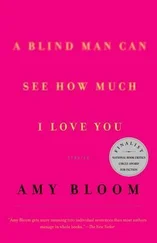In her photographs, Cheryl Chase has bright brick-red hair and the look of a feisty, troubling imp. In person, she is a handsome woman with the concise, controlled movements of a skilled equestrian, which she is. She has the air of an exhausted traveler who knows she’s only halfway down the road. Her parrot, Zelda, perches on her shoulder as Robin, wiry, slight, a little skeptical, comes in and out of the room, checking in about a study published in the Lancet supporting ISNA’s recommendations for the treatment of intersexed infants, checking in about the computers, just checking in. Robin Mathias lives with a woman on a mission, a woman who uses everything around her for the cause, selling me that videotape over the phone, and now three T-shirts before our interview begins, pitching hard for donations in the first issue of the first newsletter (“Send MONEY! No, silly, not Dr. Money — send us cash!”), appearing with Robin in an educational videotape to talk about sexual dysfunction following “corrective” surgery, which means talking about their relationship. Cheryl works all the angles, all the time; Robin watches over Cheryl.
“Parrots, with few exceptions, have no externally discernible sex differences,” Chase says. “If you care what sex your parrot is, traditionally you get a laparoscopy done and the surgeon looks at the gonads. I bought Zelda from a breeder, and she had already been laparoscopically sexed and sold as a male. But when I got her, I thought I would prefer her to be a girl and I did a social reassignment on her. No surgical reinforcement.”
I look at Zelda, who seems unbothered, and at Cheryl, whose humor is never more pronounced than this small smile.
“It’s okay. Zelda doesn’t care which pronoun I use.” Chase shakes her head. “You know, it’s as if there never was and never is common bad medical practice. No doctors treated gay men with electroshock therapy. No one was responsible for Tuskegee. No one sent people with ulcers to psychiatrists.”
People with ulcers? What about people with ulcers?
“Ulcers were considered psychosomatic. Remember all those people drinking milk and going for counseling to calm down? It turns out many of the people with ulcers have a bacterium in their pyloric valve that eats a hole in their stomach. Standard wisdom was that no living thing could exist in such an acid environment. [Paul Thagard’s book] How Scientists Explain Disease is all about the man who discovered this, who couldn’t get heard at medical conferences, couldn’t get published. Thinking didn’t change at the center, with well-respected pillars of the medical community; it changed, as this changes, on the margins, with people willing to contradict standard wisdom and conventional practice. The journals resist, the doctors resist.” Chase leans back; she appears most distant, even indifferent, when she cares the most.
“These were not bad doctors,” she says evenly. “A lot of people who feel harmed by this treatment [surgery for ambiguous genitals] will tell you that they were seen by the cream of the crop, by experts. And that’s something even doctors don’t understand. First they said, ‘We don’t have to listen to these people, they’re crazy.’ Then they said, ‘It happened a long time ago, and now we do it better, we do it right.’ Then they said, ‘These people were treated by a handful of bad doctors, and people who have good doctors have good outcomes.’ At some point, you have to look for the simple explanation. It’s a bad medical model and it causes bad outcomes.”
As for ISNA’s position, “It’s not complicated. We don’t say: Celebrate that your kid has severe hypospadias or CAH. We say: No unnecessary surgery, no cosmetic surgery without consent. And more than that, we say: No lying, no shame. We say help the parents and the patients and help them by telling the truth. No lying.”
“No lying,” Philip Gruppuso says. “No delusions of grandeur on the part of the doctor.”
Gruppuso is both a doctor and a dad. He’s a bearded, fatherly middle-aged man with twin daughters, now twenty-one years old. When sexual orientation comes up over drinks or at conferences, he tells his colleagues that he wouldn’t care if either or both of his girls were lesbians. The straight men around him eye him dubiously, and he’s not sure whether they’re wondering why he’s saying something that couldn’t possibly be true, or whether they’re wondering if it is true — which makes them wonder what kind of normal middle-aged physician and family man from the Bronx would feel that way.
“Physicians, like everyone else, find it hard to change. Not just because of habit but because, in the history of treating these kids, there is an element of homophobia. It doesn’t make my colleagues happy when I say this. If you look back at the standard texts of the fifties and sixties, the underlying concern was that people who were ‘really’ male but looked female would want to have sex with males, and the same for females who appeared male. Homosexual sex was the underlying fear. Not worrying about sexual orientation allows me to think about what’s best for the patient and what’s good medical practice.”
If this criticism has not endeared Gruppuso to his pediatric colleagues, neither has his straightforward assessment of the most common treatment for intersexed babies, and of why it’s still more common than what ISNA recommends: “This isn’t complicated, it’s simple. There are a million ways to screw this up, and most of them have to do with doctors being too sure of themselves, imagining that they control the outcome for sexual orientation and gender identity, and then doing irreversible surgery.”
Ten years ago, Phil Gruppuso, now director of research in pediatrics at Rhode Island Hospital and professor of pediatrics and biochemistry at Brown University, was a doctor just like that.
“I was a pediatric endocrinologist and very much in the mainstream. Anne Fausto-Sterling was a colleague and became a friend. I started thinking: I’m a scientist, look at the evidence, look at the follow-ups. I looked at the evidence, and the evidence that this genital surgery is a good idea is just — junk. There’s no such evidence that doing surgery on infant genitals for appearance’s sake, surgery without consent and which frequently results in sexual dysfunction — there’s no evidence at all that this is a good thing. And I am unwilling to harm patients to protect the reputations of physicians who are fine academicians and thoughtful men, but who were — mistaken.”
And his advice to doctors confronting their first intersexed baby? “Get a specialist and don’t do anything irreversible. Be willing to say, ‘It may take a month for us to have a diagnosis and a determination of gender.’ Help the parents, help the grandparents, and always, always — it’s the first thing we learn as doctors — do no harm. This surgery, and intersexed babies treated by people who don’t know what they’re doing, does harm.”
At the other end of the debate on the treatment of the intersexed are Drs. Richard Hurwitz and Harry Applebaum, creators of the American College of Surgeons training videotape on ambiguous genitals in female children. The tape begins with Vivaldi and a statement of goals: reduce the size of the clitoris, exteriorize the vagina (making it penetrable), and make the genitals cosmetically normal. There is no mention at all of either function or feeling. Hurwitz looks into the camera and says, with quiet confidence, “The treatment of the clitoris depends on its size and the preference of the surgeon.” I’m sure it is so; I’m surprised that he says it. “If the clitoris is very large, however,” Hurwitz continues as the camera carefully follows the scalpel and the removal of erectile tissue from the clitoris until it folds back into itself, accordionlike, “it may need to be taken care of for social reasons.”
Читать дальше












